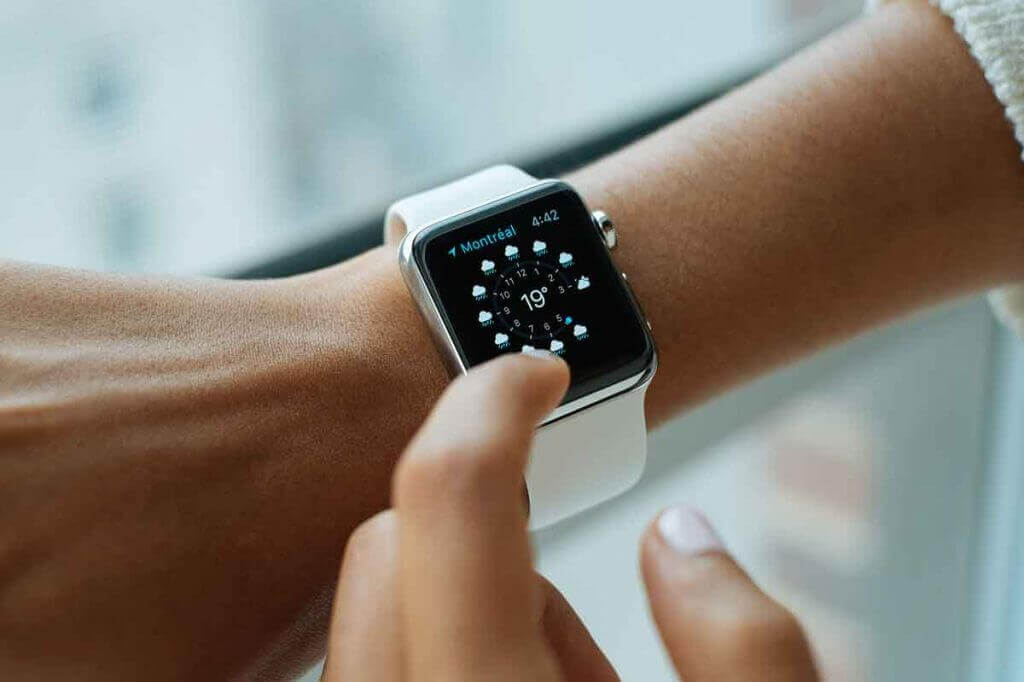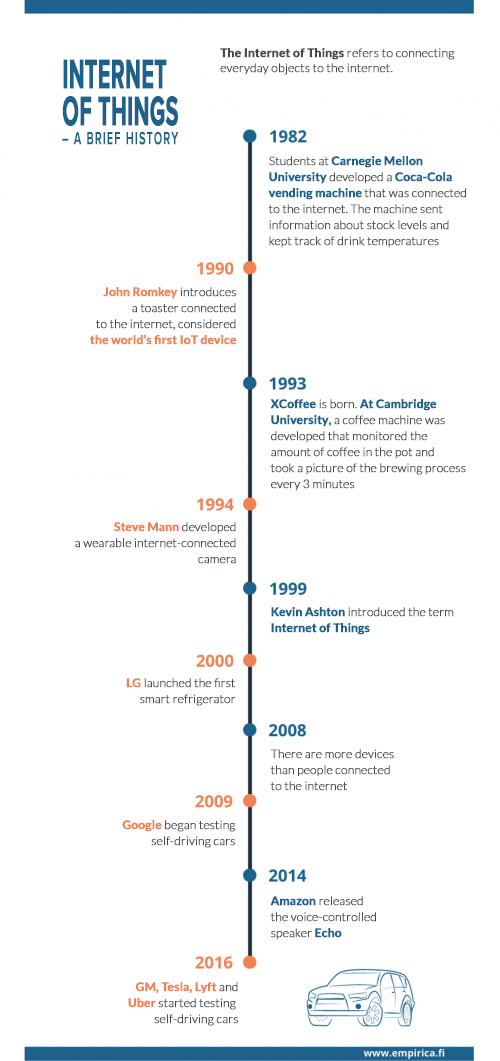
What is IoT?
Internet of Things Explained for Beginners 2025
Learn what the Internet of Things (IoT) is, how it works, and explore real-world applications in this comprehensive guide.

What is IoT?
Internet of Things Explained for Beginners 2025
Learn what the Internet of Things (IoT) is, how it works, and explore real-world applications in this comprehensive guide.
The Internet of Things, or IoT for short, means connecting objects to the internet. In this article, you’ll find everything you need to know about IoT, from a simple definition to real-world applications.
Definition of IoT
In short, IoT is about connecting all kinds of objects to the internet. That’s why it is called the Internet of Things. Objects can be devices like a smartwatch, a car, or even a coffee maker, but also various sensors that measure, for example, humidity or temperature.
Through the internet, devices can share information with each other and receive data. Sensors can also collect information from the physical environment. Based on this data, devices can operate independently or as part of a larger system. Some devices are two-way: they don’t just produce data, but also receive external data, process it, and adjust their behavior accordingly. For example, a fitness tracker can send a notification to the user once the daily step goal is achieved.
History
Connecting objects to the internet is not exactly a recent invention. The earliest experiments date back to the 1980s, the early days of the internet, when students at Carnegie Mellon University developed a Coca-Cola vending machine connected to ARPANET. The machine kept track of stock levels and drink temperatures.
However, the first true IoT device is considered to be a toaster created by John Romkey in 1990. The toaster detected when bread was placed inside and started toasting. It was connected to a large portable computer that controlled the power supply and lifted the bread once it was ready.
In 1993, the University of Cambridge developed a coffee machine called XCoffee. The coffee maker monitored the amount of coffee in the pot and took a picture of it three times a minute. Thanks to this smart machine, there was no need to walk to the break room only to find out that coffee had run out. The images made it easy to tell when fresh coffee was available.
The evolution of the internet enabled more advanced applications. In 1994, Steve Mann developed a wearable camera, one of the first cameras connected to the internet.
The term Internet of Things was first coined by Kevin Ashton in 1999. In 2000, LG released the first smart refrigerator, although it was too expensive to become a commercial success.
The number of internet-connected devices grew rapidly. In 2008, the number of devices connected to the internet surpassed the number of people. This year is often considered the true birth year of IoT.
A year later, Google began testing self-driving cars. The first driverless car was a Toyota Prius. By 2016, several other companies were also testing autonomous vehicles. In 2014, Amazon launched its voice-controlled speaker, the Echo, which became a commercial success.

Technology
Technically, an IoT system consists of either a wireless or wired network and the devices connected to it.
An IoT device can be almost any physical object, as virtually all devices can be converted into IoT devices. An IoT device is one that can connect to the internet to send or receive data.
IoT devices can also use wider coverage networks such as 3G and 4G. For IoT devices on 4G networks, dedicated technologies include NB-IoT and LTE-M. NB-IoT (Narrow Band IoT) is best suited for stationary sensors requiring long battery life, while LTE-M is better for real-time applications. These technologies also work on 5G networks. In Finland, 3G, 4G, and 5G networks are maintained by Elisa, Telia, and DNA.
In addition to 4G and 5G, IoT devices can connect to the wireless LoRaWAN network (Low Range Wide Area Network), which is based on LoRa technology. Thanks to its open standard, LoRa is a more affordable option than NB-IoT. LoRaWAN is also well-suited for mobile use, as the connection to the network remains automatically intact. In Finland, the LoRaWAN network is maintained by Digita.
Business Benefits
For many companies, the Internet of Things is a central part of their digitalization strategy. IoT opens new opportunities across all industries by reducing costs, increasing efficiency, improving safety and reliability, creating new revenue streams, and boosting customer satisfaction.
With IoT devices, vast amounts of data can be collected from the physical environment. Data is the core value of the Internet of Things. It can be leveraged in developing artificial intelligence or supporting decision-making.
Data is the lifeblood of AI. Without high-quality data, there can be no high-quality decisions—whether made by a machine or a human. AI has great potential, but without data, there is no AI. The same applies to decision-making: the quality of data ensures the right decisions. That’s why it is crucial to ensure both sufficient quantity and quality of data.
With smart devices and AI, work processes can be automated partially or completely. An IoT system can, for example, perform monitoring and automatically send alerts in specific situations. Data produced by devices, remote control, and automation lead to significant cost savings and improved efficiency.
Most Interesting Use Cases
1. Self-driving Vehicles
One of the most interesting use cases for IoT is undoubtedly the self-driving car. For a driverless car to safely navigate public roads, a large number of IoT devices are required. Other road users and road conditions are detected using cameras, radars, sensors, and microphones installed in the car. These devices collect vast amounts of data, which is then used to control the car.
The goal of autonomous vehicles is to reduce traffic accidents and make transportation more convenient. However, development work is still needed before driverless cars become an everyday reality. Currently, automakers aim to perfect the functionality of automation at SAE levels 2–4.
2. Smartwatches and Other Wearables
With the rollout of 5G, the number of wearable devices is expected to grow worldwide to over 1.1 billion in 2022. The most popular are various smartwatches and fitness trackers that can measure, for example, heart rate or daily step count. Data from the watch is transferred to a smartphone via Bluetooth.
Other wearable technology includes VR glasses, or virtual reality headsets. These are mostly used for gaming, but also in simulations, such as training surgeons by simulating surgeries.
3. Drones
Drones have brought new dimensions to photography and videography. Shots that were previously impossible are now relatively easy and affordable to capture from the air. In addition to stunning videos and images, drones are also useful to farmers for detecting weeds or other crop-threatening issues in the fields.
Beyond commercial use, drones have been deployed in rescue operations. Aerial views provide a rapid overview of a situation, improving both the safety and effectiveness of rescue missions. Some of the best use cases have been in mapping large areas, such as during wildfires or major building fires.
4. Agritech
New technology is transforming agriculture toward greater sustainability without compromising efficiency. By using sensors and cameras, the amount of pesticides can be reduced through more precise targeting. Similarly, irrigation needs can be better assessed, resulting in significant water savings.
In livestock farming, technology enables even large numbers of animals to move more freely. Human monitoring can be complemented with automated surveillance. This improves animal welfare without increasing workload.